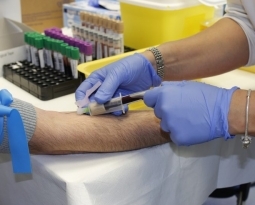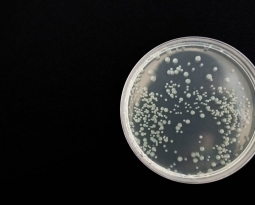Oklahoma Patent of the Month – November 2021
Most manufacturing equipment requires fluids for lubrication and smooth functioning. These fluids range from oils like hydrocarbon or synthetic products to hydraulic fluids. These fluids are typically monitored by collection and analysis of samples to ensure they remain clean and within the desired concentration range. Depending on the machine, this can be both costly and time consuming. Some machines may need to be shut down to be sampled, while others may use drain ports which will mix the lubricant with sediments – compromising the validity of the test results. Luneta, LLC. has designed a more simplified sampling and monitoring method which overcomes these problems.
Their design addresses the problem of inefficient machine fluid monitoring and sampling by introducing a condition monitoring pod. The pod has a sight glass which attaches to the machine and allows fluid to transfer into the cavity within the sight glass. The sight glass is made of transparent materials so that the fluids can be easily seen as well as the results of tests from probes. A probe then extends into the sight glass cavity to interact with the fluid. Different probes are used for different tests. For instance, a steel probe could be used to detect the presence of water, as steel rusts in the presence of water. This provides a simple visual indication that the rust inhibitor additive is no longer effective.
The sight glass also has a magnetic plug within it, meant to attract and retain particles like iron. These iron particles are commonly produced from the frictional surfaces of gears and other components, and therefore need to be extracted from the fluid. Deeper analysis of the shape and size of the particles can indicate internal conditions that may need attention. With these dual action, and easily installed, monitoring pods, it would be possible to quickly identify root causes and symptoms of failure that would have previously gone undetected.
Are you developing new technology for an existing application? Did you know your development work could be eligible for the R&D Tax Credit and you can receive up to 14% back on your expenses? Even if your development isn’t successful your work may still qualify for R&D credits (i.e. you don’t need to have a patent to qualify). To find out more, please contact a Swanson Reed R&D Specialist today or check out our free online eligibility test.
Who We Are:
Swanson Reed is one of the U.S.’ largest Specialist R&D tax advisory firms. We manage all facets of the R&D tax credit program, from claim preparation and audit compliance to claim disputes.
Swanson Reed regularly hosts free webinars and provides free IRS CE and CPE credits for CPAs. For more information please visit us at www.swansonreed.com/webinars or contact your usual Swanson Reed representative.

















